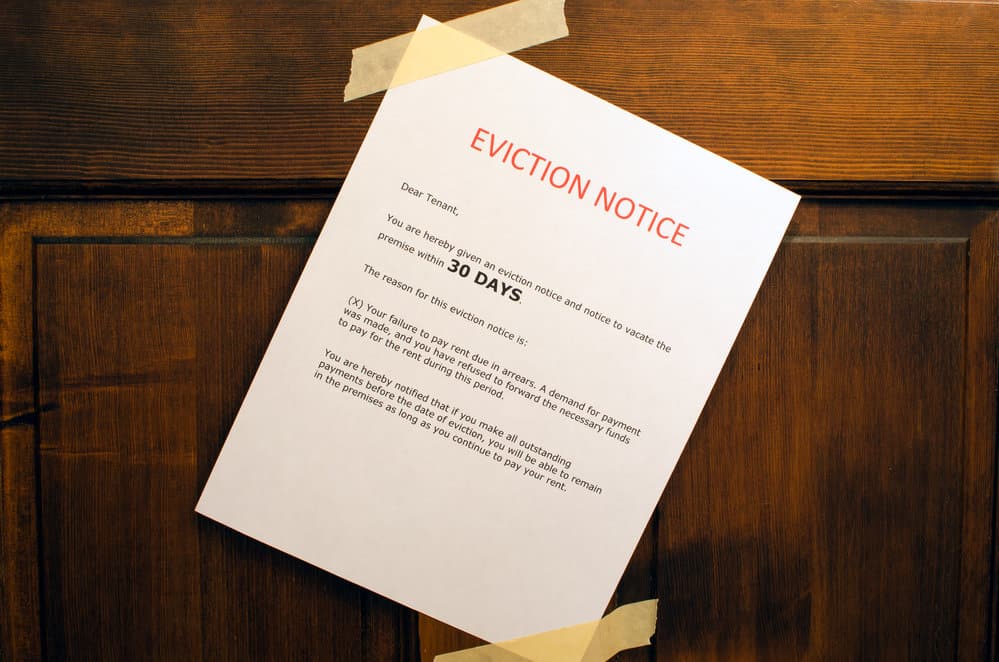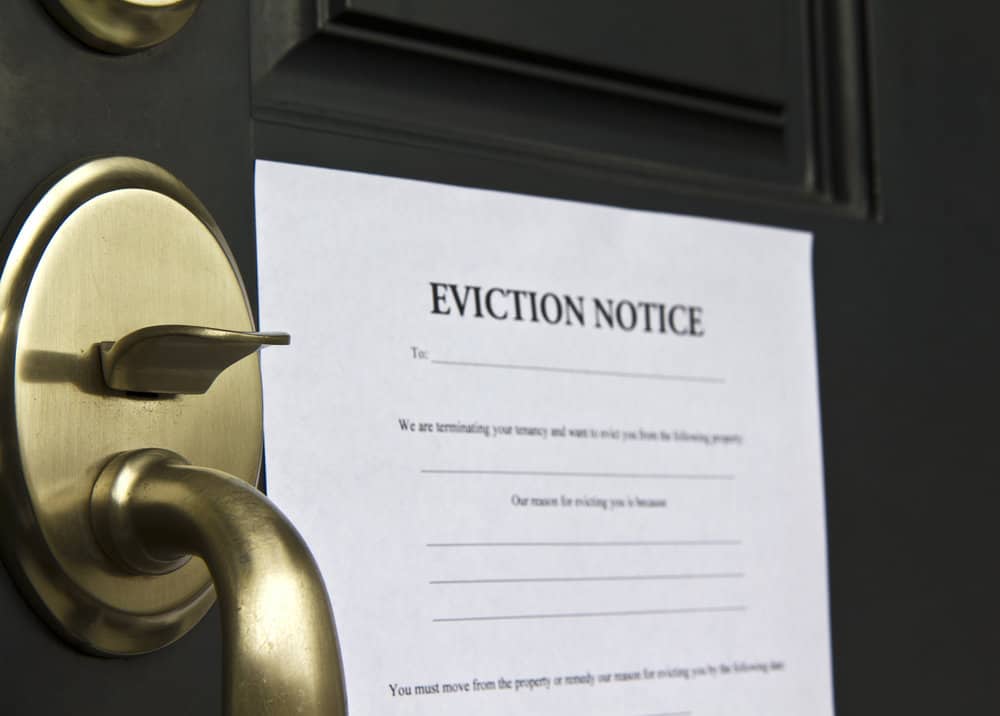Evicting a tenant can be a complex and time-consuming process for landlords. Many factors contribute to the length of the eviction process, such as the tenant’s cooperation, legal requirements, and local housing regulations. Understanding the eviction timeline is crucial for landlords and tenants, as it can help manage expectations and ensure an appropriate course of action is taken to resolve rental disputes.
Each jurisdiction has its specific laws and regulations governing evictions. Generally, the process begins with the landlord providing written notice to the tenant, outlining the reasons for eviction, and allowing for a certain period to correct the issue or vacate the property. After the notice period has passed, and if the tenant has not complied, the landlord may initiate formal legal proceedings to evict the tenant.
Court involvement in the eviction process further adds time to the situation, with factors such as scheduling hearings, providing documentation, and possibly dealing with tenant defenses or counterclaims influencing the timeline. Ultimately, the time it takes to evict someone may vary significantly based on individual circumstances and legal requirements, making it important for both parties to familiarize themselves with the specific laws and processes within their jurisdiction.
Eviction Process Overview
The eviction process typically begins when a landlord issues a written notice to the tenant. The type of notice varies depending on the state and the reason for eviction. Common notices include:
- Pay or Quit: A tenant has a specified time to pay overdue rent, usually 3-7 days.
- Cure or Quit: A tenant has a set time to correct a lease violation, such as unauthorized pets or noise disturbances.
- Unconditional Quit: A tenant must vacate the property immediately, with no opportunity to correct the issue.
Once the notice period has expired, the landlord can file an eviction lawsuit with the court if the tenant hasn’t resolved the issue or vacated the property. The court then schedules a hearing, typically within a few weeks.
During the hearing, both the landlord and tenant present their cases. If the judge rules in favor of the landlord, an eviction order is issued. The order authorizes a law enforcement officer, usually a sheriff, to physically remove the tenant and their belongings from the rental property.
The eviction process, from issuing a notice to the tenant’s removal, can take anywhere from a few weeks to several months. The timeline varies depending on factors such as:
- State and local eviction laws
- Court schedules and processing times
- Tenant’s willingness to contest the eviction or leave voluntarily
It’s essential for both landlords and tenants to understand their state’s eviction laws, abide by them, and maintain clear communication throughout the process.
Reasons for Eviction
Nonpayment of Rent
One of the most common reasons for eviction is nonpayment of rent. The landlord can begin eviction when a tenant fails to pay rent on time. Landlords should provide written notices outlining how much rent is due and specifying a deadline for payment. If the tenant does not meet the deadline, the landlord can proceed with filing an eviction lawsuit.
Lease Violation
A tenant may also face eviction if they violate the terms of their lease agreement. Some common lease violations include:
- Unauthorized pets: If the lease strictly prohibits pets, then a tenant keeping a pet on the premises could result in eviction.
- Exceeding occupancy limits: Leases often indicate the maximum number of occupants allowed in the rental unit. If the tenant exceeds this limit, they may be evicted.
- Subleasing without permission: Some leases do not allow subleasing or require the landlord’s consent. If a tenant subleases without permission, they could be in violation and face eviction.
In these cases, landlords must provide a written notice specifying the violation and allowing the tenant to correct it. If the tenant fails to comply, the eviction process may begin.
Illegal Activity
Another reason for eviction is engaging in illegal activity on the property. This can range from drug-related offenses to criminal activity. If a landlord suspects illegal activity, they should gather evidence and report it to the appropriate authorities. Following this, they can issue a notice to vacate and proceed with eviction if the tenant does not leave willingly.
Remember, landlords should consult local laws and regulations when evicting a tenant, as each jurisdiction may have specific requirements and procedures to follow.

Providing Notice to Tenants
Types of Notices
There are several types of notices a landlord may provide to a tenant, depending on the circumstances of the eviction:
- Pay Rent or Quit Notice: This notice informs the tenant that they must pay the outstanding rent within a specified timeframe, typically 3 to 5 days, or vacate the premises.
- Cure or Quit Notice: This type of notice is served when the tenant has violated a term of the lease agreement. The tenant is typically given a certain number of days to remedy the violation, or they must vacate the property.
- Unconditional Quit Notice: In more serious cases, such as multiple lease violations, illegal activities, or significant property damage, the landlord may issue an unconditional quit notice. This notice demands that the tenant vacate the premises immediately without an opportunity to correct the issue.
How to Serve a Notice
Serving a notice to a tenant is an important step in eviction. Landlords must follow the proper legal procedures to ensure the notice is valid. There are several methods for serving a notice:
- Personal service: The landlord or their agent delivers the notice directly to the tenant in person.
- Substituted service: If the tenant is unavailable, the notice can be given to a person of suitable age and discretion living at the property. A copy must also be mailed to the tenant.
- Posting and mailing: If neither the tenant nor a suitable substitute can be found, the notice can be posted in a conspicuous place on the property, and a copy must be mailed to the tenant.
In some cases, following the appropriate notice period, a landlord may need to initiate a court hearing to proceed with the eviction. This often involves filing an unlawful detainer lawsuit, serving the tenant with a summons and complaint, and awaiting a judgment from the court.
Eviction Timelines by State

California
In California, the eviction timeline varies depending on the reason for eviction. In general, tenants have:
- 3 days to remedy a violation (e.g., pay rent or correct a lease violation)
- 5 days to respond to an unlawful detainer lawsuit if they fail to remedy the violation
- 20 days for a court hearing on the eviction
- 5 days to move out if the court rules in favor of the landlord
Overall, the eviction process in California can take a few weeks if the tenant is uncooperative.
Alabama
In Alabama, the eviction timeline is as follows:
- 7 days for non-payment of rent or lease violations
- 30 days for no-cause eviction in a month-to-month tenancy
- 7 days to respond to an eviction lawsuit
- 14-30 days for a court hearing and decision
Alaska
In Alaska, the eviction timeline depends on the rental agreement:
- 7 days for non-payment of rent
- 10 days for other lease violations
- 30 days for no-cause eviction in a month-to-month tenancy
- 15 days to contest an eviction in court
Arizona
In Arizona, the eviction process typically follows these timelines:
- 5 days for non-payment of rent
- 10 days for other lease violations
- 30 days for no-cause eviction in a month-to-month tenancy
- A few weeks for the court eviction process
Arkansas
In Arkansas, the eviction timeline generally includes:
- 3 days for non-payment of rent
- 14 days for other lease violations
- 30 days for no-cause eviction in a month-to-month tenancy
- 10 days after the court judgment for the tenant to vacate
Colorado
In Colorado, the eviction process typically takes:
- 10 days for non-payment of rent or lease violations
- 21 days for no-cause eviction in a month-to-month tenancy
- A few weeks for the court eviction process
Connecticut
In Connecticut, the eviction timeline usually follows:
- 3 days for non-payment of rent
- 15 days for other lease violations
- 30 days for no-cause eviction in a month-to-month tenancy
- Approximately 30 days for the court eviction process
Delaware
In Delaware, the eviction timeline varies depending on the rental agreement:
- 5 days for non-payment of rent
- 7 days for other lease violations
- 60 days for no-cause eviction in a month-to-month tenancy
- 10 days after the court judgment for the tenant to vacate
Florida
In Florida, the eviction process generally includes the following:
- 3 days for non-payment of rent
- 7 days for other lease violations
- 15 days for no-cause eviction in a month-to-month tenancy
- Approximately 3-4 weeks for the court eviction process
Georgia
In Georgia, the eviction timeline can include:
- 3 days for non-payment of rent
- 30 days for other lease violations
- 60 days for no-cause eviction in a month-to-month tenancy
- Approximately 1-2 months for the court eviction process
Hawaii
In Hawaii, the eviction process typically follows:
- 5 days for non-payment of rent
- 10 days for other lease violations
- 45 days for no-cause eviction in a month-to-month tenancy
- Approximately 2-3 months for the court eviction process
Idaho
In Idaho, the eviction timeline varies depending on the rental agreement:
- 3 days for non-payment of rent
- 3 days for other lease violations
- 30 days for no-cause eviction in a month-to-month tenancy
- A few weeks for the court eviction process
Illinois
In Illinois, the eviction timeline can include:
- 5 days for non-payment of rent
- 10 days for other lease violations
- 30 days for no-cause eviction in a month-to-month tenancy
- Approximately 1-2 months for the court eviction process
Indiana
In Indiana, the eviction timeline typically includes:
- 10 days for non-payment of rent
- 30 days for other lease violations
- 30 days for no-cause eviction in a month-to-month tenancy
- Approximately 4-6 weeks for the court eviction process
Iowa
In Iowa, the eviction process generally follows:
- 3 days for non-payment of rent
- 7 days for other lease violations
- 30 days for no-cause eviction in a month-to-month tenancy
- Approximately 2-3 weeks for the court eviction process
Kansas
In Kansas, the eviction timeline can include:
- 3 days for non-payment of rent
- 14 days for other lease violations
- 30 days for no-cause eviction in a month-to-month tenancy
- A few weeks for the court eviction process
Kentucky
In Kentucky, the eviction timeline typically follows:
- 7 days for non-payment of rent
- 15 days for other lease violations
- 30 days for no-cause eviction in a month-to-month tenancy
- Approximately 1-2 months for the court eviction process
Louisiana
In Louisiana, the eviction timeline varies depending on the rental agreement:
- 5 days for non-payment of rent
- 5 days for other lease violations
- 10 days for no-cause eviction in a month-to-month tenancy
- Approximately 3-4 weeks for the court eviction process
Maine
In Maine, the eviction process generally includes:
- 7 days for non-payment of rent
- 30 days for other lease violations
- 45 days for no-cause eviction in a month-to-month tenancy
- Approximately 1-2 months for the court eviction process
Maryland
In Maryland, the eviction timeline can include:
- 5 days for non-payment of rent
- 30 days for other lease violations
- 60 days for no-cause eviction in a month-to-month tenancy
- Approximately 1-2 months for the court eviction process
Massachusetts
In Massachusetts, the eviction timeline typically follows:
- 14 days for non-payment of rent
- 30 days for other lease violations
- 30 days for no-cause eviction in a month-to-month tenancy
- Approximately 1-2 months for the court eviction process
Filing an Eviction Lawsuit
Filing an eviction lawsuit is an essential step in the eviction process if a tenant has failed to comply with legally mandated notices to vacate the premises. Various laws and legal action may be involved depending on the jurisdiction and specific situation. The lawsuit, commonly called an unlawful detainer, is integral to landlord-tenant law.
When a tenant breaches a lease agreement, the landlord has the right to take legal action. The landlord must first provide the tenant with written notice, the length and type of which may vary based on local laws. If the tenant does not rectify the violation or voluntarily leaves the property, the landlord can proceed with filing an eviction lawsuit.
The landlord must follow specific laws and guidelines during the eviction lawsuit process. This typically involves:
- Filing a complaint with the local court, including detailing the causes for eviction and requesting a judgment in favor of the landlord.
- Serving the tenant with a copy of the lawsuit, allowing them to respond and contest the eviction if they believe it is unjust.
If the tenant chooses to contest the eviction, a hearing or jury trial may be scheduled, which could prolong the eviction timeline. This often results in additional legal fees and time invested by both parties.
In conclusion, filing an eviction lawsuit is rooted in adherence to laws, lease agreements, and legal deadlines. While each jurisdiction may have nuances, understanding the basics of unlawful detainers and landlord-tenant law is crucial for anyone involved in eviction disputes. Careful planning and following proper communication channels may facilitate a smoother process and contribute to a quicker resolution.
Enforcing the Eviction Order
Once a landlord has obtained a court order for eviction, enforcement becomes the next step. The process and time taken can vary depending on the state and local regulations. Generally, the court issues a writ of possession, granting the landlord the right to reclaim their property.
Upon receiving the writ of possession, the landlord must provide it to their local law enforcement agency to take action. Some states may require the landlord to schedule an appointment with law enforcement to execute the order. It is crucial to note that self-help evictions, such as changing the locks or forcibly removing the tenant, are typically illegal and can result in penalties for the landlord.
The time frame for eviction enforcement can vary from a couple of days to a few weeks, depending on the jurisdiction and the efficiency of law enforcement. Throughout the process, communication with law enforcement is essential to ensure that the eviction proceeds smoothly and within the boundaries of the law.
In some states, tenants may be granted grace periods, allowing them additional time to find new housing and vacate the property. These grace periods can range from days to weeks, depending on the specific state statutes.
Enforcing an eviction order can be complex, including attending hearings and adhering to regulations. Being informed and complying with the court and state requirements is imperative to successfully evicting a tenant while avoiding potential legal complications.
Appealing an Eviction Judgment
When a tenant receives an eviction order from a judicial officer, they can appeal the decision. The appeals process begins with the tenant filing a formal appeal with the court. This should be done as soon as possible, as there may be strict deadlines depending on the jurisdiction.
During the appeal, the tenant must present their response to the eviction order and any relevant documents or evidence supporting their case. The tenant needs to provide a strong argument against the eviction order, as this will offer a higher chance of success in overturning the decision.
In some cases, the tenant may request a stay of execution, temporarily pausing the eviction process while the appeal is being considered. However, not all courts grant stays of execution, and granting such a request is at the discretion of the judicial officer.
The court hearing for an eviction appeal typically involves the tenant and the landlord presenting their arguments before a judge. The judge will then review the case and decide. If the appeal succeeds, the eviction order may be overturned, or a new hearing may be scheduled.
It’s noteworthy that appealing an eviction judgment can be complex, and legal counsel is advisable for both parties. This ensures that all necessary procedures are followed and the rights of both the tenant and landlord are upheld throughout the process.
Overall, appealing an eviction judgment is an option available for tenants who believe they have a valid reason to challenge the eviction order. It’s essential to act quickly, gather supporting documents, and consult legal counsel to ensure the best possible outcome.
Tenant and Landlord Rights and Duties
In eviction, tenants and landlords have specific rights and responsibilities. Landlords must follow legal procedures, while tenants have the right to receive proper notification and defend themselves against eviction cases.
Tenants on a fixed-term lease can only be evicted for good cause, such as failure to pay rent, property damage, or violating the lease agreement. On the other hand, month-to-month tenants can be evicted without cause by providing proper notice, usually 30 or 60 days, depending on the jurisdiction.
Landlords have the responsibility to provide habitable housing for their tenants. If the owner fails to maintain the property, a tenant may have the right to withhold rent or terminate the lease. However, the tenant must follow legal procedures before taking these actions.
Unconditional quit notices are used in more severe cases, such as illegal activity on the property. In these situations, landlords can demand tenants to leave immediately without providing any notice to correct the violations.
In most cases, landlords are required to follow a specific eviction process, which includes:
- Properly serving an eviction notice (e.g., 3-day notice, 30-day notice, or 60-day notice)
- Filing an unlawful detainer lawsuit if the tenant does not comply with the notice
- Obtaining a court order granting permission to evict
- Coordinating with local law enforcement to physically remove the tenant from the property
Both tenants and landlords must understand their rights and duties in eviction matters to ensure compliance with the law and avoid potential complications.
Resources and Legal Assistance
When facing an eviction, both tenants and property managers may need to seek legal assistance to ensure their rights are protected. Various resources can help in navigating the eviction procedures.
Legal aid organizations provide free or low-cost legal services to those who qualify. These organizations can assist both tenants and property managers throughout the eviction process. Some non-profit organizations and local bar associations also offer pro bono legal services.
One must familiarize oneself with the eviction notices to understand the eviction process. One common type is the unconditional quit notice, which requires the tenant to vacate the premises immediately without the opportunity to remedy the situation. This notice is typically used in severe cases, such as repeated violations or illegal activity on the property.
Eviction procedures vary by jurisdiction and may require specific steps to be followed. Key aspects of the process can include:
- Delivering a written eviction notice to the tenant
- Allowing the tenant a specified amount of time to remedy the issue or vacate
- Filing a legal complaint with the court if the tenant does not comply
- Attending a court hearing to present the case
The court date is a crucial part of the eviction process. The tenant and the property manager must attend this hearing to state their case. The judge will then decide if the eviction is warranted.
When seeking resources and legal assistance, consider the following options:
- Local legal aid organizations
- Non-profit tenant advocacy groups
- Local bar associations offering pro bono services
- State housing agencies
These resources can be valuable for tenants and property managers during an eviction, ensuring the process is handled professionally and fairly.
FAQs
How long does it typically take to evict a tenant?
The eviction process duration can vary depending on the location and circumstances. Generally, it can take anywhere from a few weeks to several months.
What are the common reasons for eviction?
Some common reasons for eviction include:
- Non-payment of rent
- Lease violations
- Illegal activities on the property
- Expiration of the lease without renewal
What is the legal process for eviction?
The process usually involves:
- Notice: The landlord provides written notice to the tenant, stating the reason for eviction.
- Court filing: If the tenant doesn’t rectify the issue, the landlord can file an eviction lawsuit.
- Court hearing: A judge will hear both parties and decide on the eviction.
- Eviction order: If the judge rules in favor of the landlord, a court order for eviction is issued.
- Removal: The tenant must vacate the property within the allotted time, or law enforcement will remove them.
| Step | Duration |
|---|---|
| Notice | Varies by location (usually 3-30 days) |
| Court filing | 1-2 weeks |
| Court hearing | 2-4 weeks |
| Eviction order | 1week – 1 month |
| Removal | Depends on law enforcement schedules |
Do tenants have rights during the eviction process?
Yes, tenants have rights, such as receiving proper notice and attending a court hearing to present their case. Landlords cannot forcefully evict a tenant without a court order.
Can a tenant fight an eviction?
Tenants can fight an eviction if they believe the landlord’s reason is unjust or have evidence to counter the landlord’s claims. Legal assistance is recommended in these situations.



